39 papers:
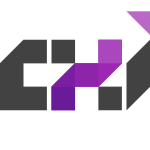 CHI-2015-CorstenCKB #named
CHI-2015-CorstenCKB #named- HaptiCase: Back-of-Device Tactile Landmarks for Eyes-Free Absolute Indirect Touch (CC, CC, TK, JOB), pp. 2171–2180.
 CHI-2015-DeberJFW #how #latency #performance
CHI-2015-DeberJFW #how #latency #performance- How Much Faster is Fast Enough?: User Perception of Latency & Latency Improvements in Direct and Indirect Touch (JD, RJ, CF, DW), pp. 1827–1836.
 ICEIS-v1-2015-SilvaBZ
ICEIS-v1-2015-SilvaBZ- Indirect Normative Conflict — Conflict that Depends on the Application Domain (VTdS, CB, JdOZ), pp. 452–461.
 CHI-2014-GilliotCR
CHI-2014-GilliotCR- Impact of form factors and input conditions on absolute indirect-touch pointing tasks (JG, GC, NR), pp. 723–732.
 ICML-c1-2014-RooshenasL #interactive #learning #network
ICML-c1-2014-RooshenasL #interactive #learning #network- Learning Sum-Product Networks with Direct and Indirect Variable Interactions (AR, DL), pp. 710–718.
 CHI-2013-HeoL13a #estimation #multi
CHI-2013-HeoL13a #estimation #multi- Indirect shear force estimation for multi-point shear force operations (SH, GL), pp. 281–284.
 CHI-2013-VoelkerWB #evaluation
CHI-2013-VoelkerWB #evaluation- An evaluation of state switching methods for indirect touch systems (SV, CW, JOB), pp. 745–754.
 DHM-SET-2013-MoriK #3d #evaluation #simulation
DHM-SET-2013-MoriK #3d #evaluation #simulation- Ergonomics Study of Direct and Indirect Visibility Evaluation at Uncontrolled Intersections Based on Three-Dimensional Computer Simulation (MM, NK), pp. 70–77.
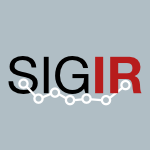 SIGIR-2013-HeBV #multi #query
SIGIR-2013-HeBV #multi #query- Characterizing stages of a multi-session complex search task through direct and indirect query modifications (JH, MB, APdV), pp. 897–900.
 CASE-2012-ChowdhuryTWSLG #automation #biology #using
CASE-2012-ChowdhuryTWSLG #automation #biology #using- Automated indirect transport of biological cells with optical tweezers using planar gripper formations (SC, AT, CW, PS, WL, SKG), pp. 267–272.
 CC-2012-FarooqCJ #branch #compilation #predict
CC-2012-FarooqCJ #branch #compilation #predict- Compiler Support for Value-Based Indirect Branch Prediction (MUF, LC, LKJ), pp. 185–199.
 CHI-2011-NackeKLM #design #game studies #interactive #using
CHI-2011-NackeKLM #design #game studies #interactive #using- Biofeedback game design: using direct and indirect physiological control to enhance game interaction (LEN, MK, CL, RLM), pp. 103–112.
 HCD-2011-HoriKK #testing #usability
HCD-2011-HoriKK #testing #usability- Investigation of Indirect Oral Operation Method for Think Aloud Usability Testing (MH, YK, TK), pp. 38–46.
 CIKM-2011-MohtaramiALT #nondeterminism #predict #sentiment
CIKM-2011-MohtaramiALT #nondeterminism #predict #sentiment- Predicting the uncertainty of sentiment adjectives in indirect answers (MM, HA, ML, CLT), pp. 2485–2488.
 CHI-2010-LucaHH #named
CHI-2010-LucaHH #named- ColorPIN: securing PIN entry through indirect input (ADL, KH, HH), pp. 1103–1106.
 ICML-2010-ChangSGR #learning
ICML-2010-ChangSGR #learning- Structured Output Learning with Indirect Supervision (MWC, VS, DG, DR), pp. 199–206.
 POPL-2010-HoborDA #approximate #formal method
POPL-2010-HoborDA #approximate #formal method- A theory of indirection via approximation (AH, RD, AWA), pp. 171–184.
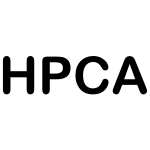 HPCA-2010-FarooqCJ #predict
HPCA-2010-FarooqCJ #predict- Value Based BTB Indexing for indirect jump prediction (MUF, LC, LKJ), pp. 1–11.
 CHI-2008-ForlinesB #feedback
CHI-2008-ForlinesB #feedback- Evaluating tactile feedback and direct vs. indirect stylus input in pointing and crossing selection tasks (CF, RB), pp. 1563–1572.
 CHI-2008-MoscovichH #multi #using
CHI-2008-MoscovichH #multi #using- Indirect mappings of multi-touch input using one and two hands (TM, JFH), pp. 1275–1284.
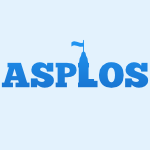 ASPLOS-2008-JoaoMKAP #object-oriented #performance
ASPLOS-2008-JoaoMKAP #object-oriented #performance- Improving the performance of object-oriented languages with dynamic predication of indirect jumps (JAJ, OM, HK, RA, YNP), pp. 80–90.
 ASE-2007-SarmaBH #configuration management #towards
ASE-2007-SarmaBH #configuration management #towards- Towards supporting awareness of indirect conflicts across software configuration management workspaces (AS, GB, AvdH), pp. 94–103.
 CGO-2007-HiserWHDMC #branch
CGO-2007-HiserWHDMC #branch- Evaluating Indirect Branch Handling Mechanisms in Software Dynamic Translation Systems (JH, DWW, WH, JWD, JM, BRC), pp. 61–73.
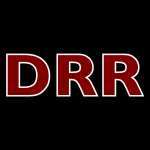 DRR-2006-LoprestiNJ #correlation #generative #graph
DRR-2006-LoprestiNJ #correlation #generative #graph- Match graph generation for symbolic indirect correlation (DPL, GN, AJ).
 ICPR-v3-2006-JoshiNLS #approach #correlation
ICPR-v3-2006-JoshiNLS #approach #correlation- A Maximum-Likelihood Approach to Symbolic Indirect Correlation (AJ, GN, DPL, SCS), pp. 99–103.
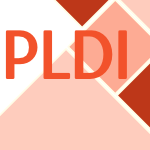 PLDI-2003-ErtlG #branch #optimisation #predict #virtual machine
PLDI-2003-ErtlG #branch #optimisation #predict #virtual machine- Optimizing indirect branch prediction accuracy in virtual machine interpreters (MAE, DG), pp. 278–288.
 CIKM-2001-ConradD #automation #recognition
CIKM-2001-ConradD #automation #recognition- Automatic Recognition of Distinguishing Negative Indirect History Language in Judicial Opinions (JGC, DPD), pp. 287–294.
 ISMM-2000-Dickman
ISMM-2000-Dickman- Diffusion Tree Restructuring for Indirect Reference Counting (PD), pp. 167–177.
 SIGIR-1998-SwanA #3d #information retrieval #visualisation
SIGIR-1998-SwanA #3d #information retrieval #visualisation- Aspect Windows, 3-D Visualizations, and Indirect Comparisons of Information Retrieval Systems (RCS, JA), pp. 173–181.
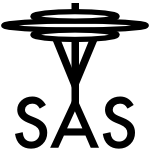 SAS-1997-UhW #branch #performance
SAS-1997-UhW #branch #performance- Coalescing Conditional Branches into Efficient Indirect Jumps (GRU, DBW), pp. 315–329.
 HCI-CC-1997-Venda97a #assembly #design #industrial #testing
HCI-CC-1997-Venda97a #assembly #design #industrial #testing- Ergonomic Design and Industrial Testing of the Televised Assembly and Manual Material Handling Workstations with Indirect Observation of Operations (VFV), pp. 847–850.
 HCI-CC-1997-VendaL #assembly #evaluation #using
HCI-CC-1997-VendaL #assembly #evaluation #using- Ergonomic Evaluation of Manual Assembly Operations Using Direct and Indirect Observation Workstations in Sitting and Standing Positions (VFV, SSL), pp. 855–858.
 KR-1996-GustafssonD #specification
KR-1996-GustafssonD #specification- Embracing Occlusion in Specifying the Indirect Effects of Actions (JG, PD), pp. 87–98.
 ICRE-1996-Hudlicka #comparison #elicitation #requirements
ICRE-1996-Hudlicka #comparison #elicitation #requirements- Requirements Elicitation with Indirect Knowledge Elicitation Techniques: Comparison of Three Methods (EH), pp. 4–11.
 CC-1996-ChowCLLS #alias #effectiveness #memory management #representation
CC-1996-ChowCLLS #alias #effectiveness #memory management #representation- Effective Representation of Aliases and Indirect Memory Operations in SSA Form (FCC, SC, SML, RL, MS), pp. 253–267.
 IWMM-1995-Piquer #distributed #garbage collection
IWMM-1995-Piquer #distributed #garbage collection- Indirect Mark and Sweep: A Distributed GC (JMP), pp. 267–282.
 KR-1994-KarthaL
KR-1994-KarthaL- Actions with Indirect Effects (Preliminary Report) (GNK, VL), pp. 341–350.
 POPL-1994-CalderG #c++ #source code
POPL-1994-CalderG #c++ #source code- Reducing Indirect Function call Overhead in C++ Programs (BC, DG), pp. 397–408.
 CCHSC-1988-Mughal #generative #incremental #programming #thread
CCHSC-1988-Mughal #generative #incremental #programming #thread- Generation of Incremental Indirect Threaded Code for Language-Based Programming Environments (KAM), pp. 230–242.
 CHI-2015-CorstenCKB #named
CHI-2015-CorstenCKB #named CHI-2015-DeberJFW #how #latency #performance
CHI-2015-DeberJFW #how #latency #performance ICEIS-v1-2015-SilvaBZ
ICEIS-v1-2015-SilvaBZ CHI-2014-GilliotCR
CHI-2014-GilliotCR ICML-c1-2014-RooshenasL #interactive #learning #network
ICML-c1-2014-RooshenasL #interactive #learning #network CHI-2013-HeoL13a #estimation #multi
CHI-2013-HeoL13a #estimation #multi CHI-2013-VoelkerWB #evaluation
CHI-2013-VoelkerWB #evaluation DHM-SET-2013-MoriK #3d #evaluation #simulation
DHM-SET-2013-MoriK #3d #evaluation #simulation SIGIR-2013-HeBV #multi #query
SIGIR-2013-HeBV #multi #query CASE-2012-ChowdhuryTWSLG #automation #biology #using
CASE-2012-ChowdhuryTWSLG #automation #biology #using CC-2012-FarooqCJ #branch #compilation #predict
CC-2012-FarooqCJ #branch #compilation #predict CHI-2011-NackeKLM #design #game studies #interactive #using
CHI-2011-NackeKLM #design #game studies #interactive #using HCD-2011-HoriKK #testing #usability
HCD-2011-HoriKK #testing #usability CIKM-2011-MohtaramiALT #nondeterminism #predict #sentiment
CIKM-2011-MohtaramiALT #nondeterminism #predict #sentiment CHI-2010-LucaHH #named
CHI-2010-LucaHH #named ICML-2010-ChangSGR #learning
ICML-2010-ChangSGR #learning POPL-2010-HoborDA #approximate #formal method
POPL-2010-HoborDA #approximate #formal method HPCA-2010-FarooqCJ #predict
HPCA-2010-FarooqCJ #predict CHI-2008-ForlinesB #feedback
CHI-2008-ForlinesB #feedback CHI-2008-MoscovichH #multi #using
CHI-2008-MoscovichH #multi #using ASPLOS-2008-JoaoMKAP #object-oriented #performance
ASPLOS-2008-JoaoMKAP #object-oriented #performance ASE-2007-SarmaBH #configuration management #towards
ASE-2007-SarmaBH #configuration management #towards CGO-2007-HiserWHDMC #branch
CGO-2007-HiserWHDMC #branch DRR-2006-LoprestiNJ #correlation #generative #graph
DRR-2006-LoprestiNJ #correlation #generative #graph ICPR-v3-2006-JoshiNLS #approach #correlation
ICPR-v3-2006-JoshiNLS #approach #correlation PLDI-2003-ErtlG #branch #optimisation #predict #virtual machine
PLDI-2003-ErtlG #branch #optimisation #predict #virtual machine CIKM-2001-ConradD #automation #recognition
CIKM-2001-ConradD #automation #recognition ISMM-2000-Dickman
ISMM-2000-Dickman SIGIR-1998-SwanA #3d #information retrieval #visualisation
SIGIR-1998-SwanA #3d #information retrieval #visualisation SAS-1997-UhW #branch #performance
SAS-1997-UhW #branch #performance HCI-CC-1997-Venda97a #assembly #design #industrial #testing
HCI-CC-1997-Venda97a #assembly #design #industrial #testing HCI-CC-1997-VendaL #assembly #evaluation #using
HCI-CC-1997-VendaL #assembly #evaluation #using KR-1996-GustafssonD #specification
KR-1996-GustafssonD #specification ICRE-1996-Hudlicka #comparison #elicitation #requirements
ICRE-1996-Hudlicka #comparison #elicitation #requirements CC-1996-ChowCLLS #alias #effectiveness #memory management #representation
CC-1996-ChowCLLS #alias #effectiveness #memory management #representation IWMM-1995-Piquer #distributed #garbage collection
IWMM-1995-Piquer #distributed #garbage collection KR-1994-KarthaL
KR-1994-KarthaL POPL-1994-CalderG #c++ #source code
POPL-1994-CalderG #c++ #source code CCHSC-1988-Mughal #generative #incremental #programming #thread
CCHSC-1988-Mughal #generative #incremental #programming #thread









